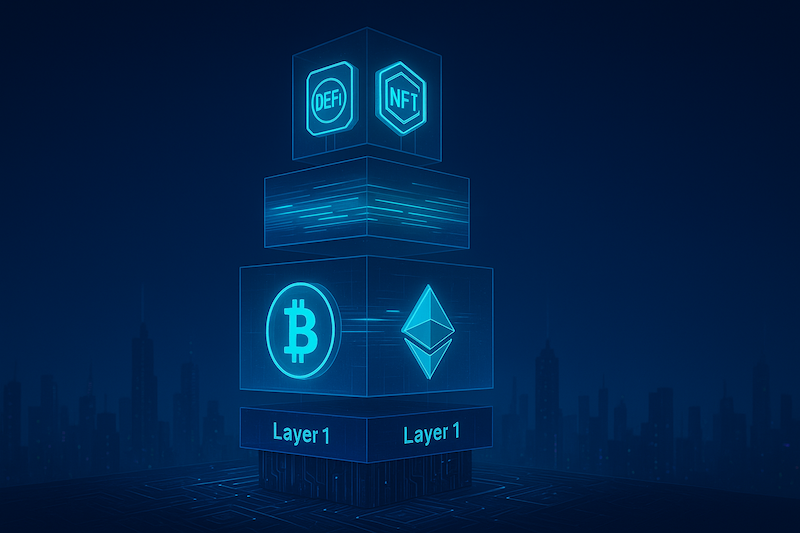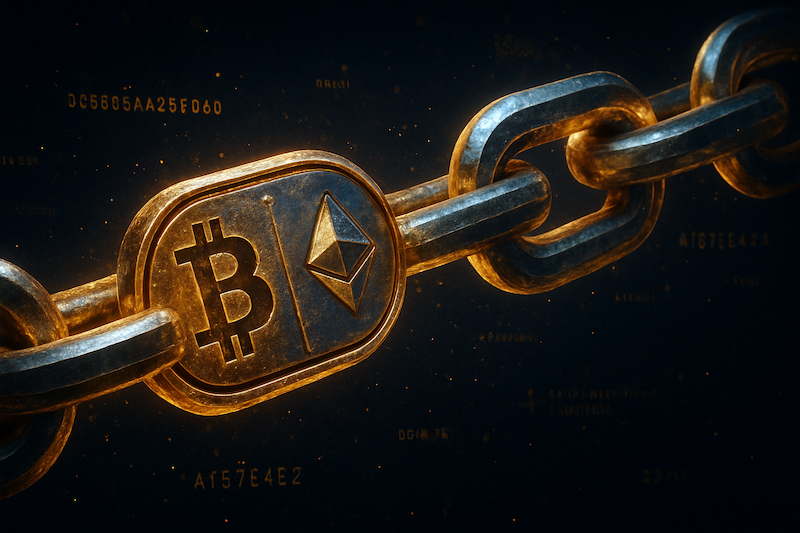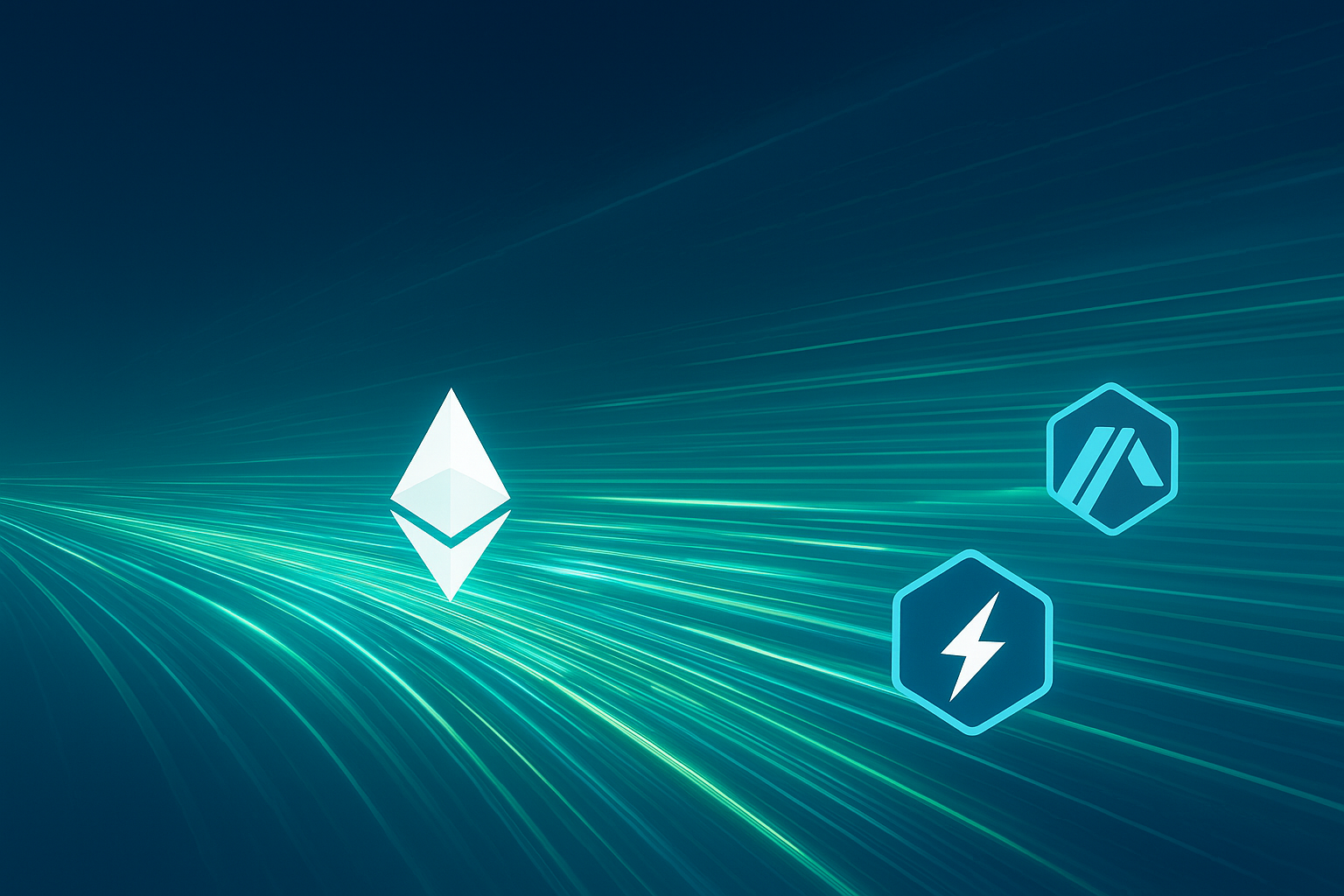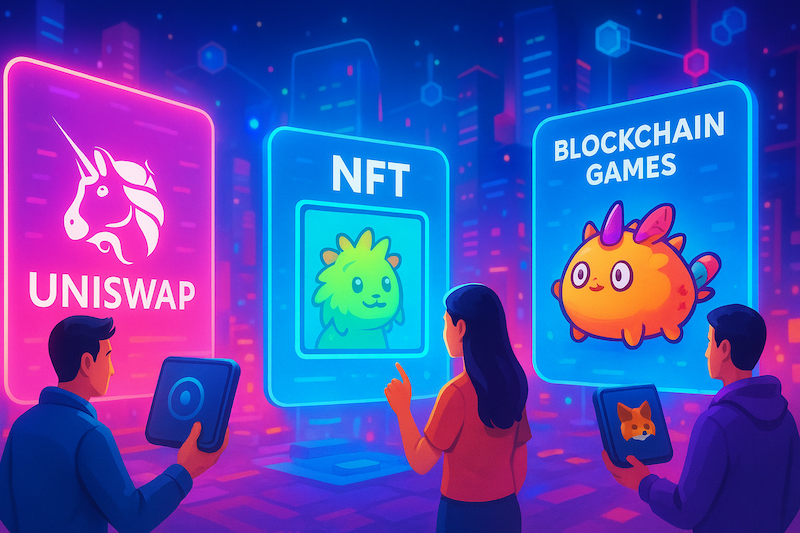 In the era of digital transformation, blockchain technology has become a foundational pillar for cryptocurrencies and financial markets. Picture a multi-layered system, where each layer adds value, much like the floors of a skyscraper: from a sturdy foundation to a penthouse with a panoramic view. With the rising popularity of decentralized finance (DeFi), non-fungible tokens (NFTs), and smart contracts, understanding blockchain’s layers is crucial for investors, developers, and cryptocurrency enthusiasts.
In the era of digital transformation, blockchain technology has become a foundational pillar for cryptocurrencies and financial markets. Picture a multi-layered system, where each layer adds value, much like the floors of a skyscraper: from a sturdy foundation to a penthouse with a panoramic view. With the rising popularity of decentralized finance (DeFi), non-fungible tokens (NFTs), and smart contracts, understanding blockchain’s layers is crucial for investors, developers, and cryptocurrency enthusiasts.
As of 2025, the global blockchain market exceeds $20 billion and continues to grow, fueled by its integration into traditional finance, such as bank transfers and asset tokenization. This article breaks down the architecture of blockchain, explains its layers, and illustrates how they address the blockchain trilemma—the balance between decentralization, scalability, and security. We’ll emphasize practical examples from the cryptocurrency world to help you navigate this dynamic space.
Blockchain Architecture: Core Components
Blockchain is not just a chain of blocks but a complex ecosystem where every element works in harmony. Its architecture is divided into several key segments that ensure the network’s seamless operation. Let’s explore them step by step to understand how blockchain supports cryptocurrency transactions and decentralized applications.
Hardware Layer
This is the foundational level where physical hardware meets the digital world. Without reliable infrastructure, blockchain wouldn’t function. This layer involves powerful servers, data centers, and specialized mining equipment that provide computational power and data storage.
- Nodes: Computers connected to the network that store copies of the blockchain and participate in transaction validation. In networks like Bitcoin, they ensure decentralization by distributing the workload.
- Mining Hardware: In proof-of-work (PoW) systems like Bitcoin, ASIC miners solve complex mathematical problems. This is energy-intensive but ensures security.
- Cloud Solutions: Modern blockchains, including Ethereum, often rely on cloud platforms like AWS or Google Cloud for scalable storage, lowering barriers to entry for new participants.
This layer is critical for financial markets, where infrastructure stability directly impacts cryptocurrency volatility.
Data Layer
This layer handles the recording and protection of information. Blockchain uses a distributed ledger where transactions are grouped into blocks, secured by cryptographic hashes, making them immutable and transparent.
- Blocks: Each block contains transaction data, timestamps, and links to the previous block, forming a chain.
- Merkle Trees: These structures enable efficient verification of large datasets, useful for auditing in financial applications.
- Public Ledger: Ensures transparency, allowing anyone to verify transaction history, which is vital for cryptocurrency exchanges to prevent fraud.
Network Layer
The network is the "nervous system" of blockchain, enabling communication between nodes. It handles transaction propagation and data synchronization worldwide.
- Peer-to-Peer (P2P) Protocols: Allow nodes to communicate directly without a central server, enhancing decentralization.
- Data Relays: Nodes share information, ensuring all network participants have an up-to-date ledger.
- Propagation Protocols: Manage data flow, optimizing speed for applications like cryptocurrency trading.
Without an efficient network, blockchain couldn’t support global financial operations like cross-border payments.
Consensus Layer
This is the heart of trust in blockchain: algorithms that ensure all nodes agree on transaction validity. They prevent conflicts and maintain system integrity.
- Consensus Algorithms: From PoW in Bitcoin (energy-intensive but secure) to PoS in Ethereum (more eco-friendly, where validators stake tokens). Other variants include delegated proof-of-stake (DPoS) in networks like EOS.
- Validators: Nodes that confirm transactions and add them to the chain.
- Fault Tolerance: The system withstands attacks, remaining operational even with malicious nodes.
In financial markets, consensus mechanisms ensure cryptocurrency price stability, preventing manipulation.
Application Layer
The top layer is where users interact with blockchain. This is where real-world applications, from smart contracts to games, come to life.
- Smart Contracts: Self-executing code that manages transactions without intermediaries.
- DApps (Decentralized Applications): Examples include Uniswap for token swaps or Aave for DeFi lending.
- Wallets: Interfaces like Metamask that allow users to manage cryptocurrency assets.
This layer makes blockchain accessible for everyday financial operations.
Blockchain Layers: From Layer 0 to Layer 3
Now, let’s dive into the multi-layered blockchain model, which addresses key challenges. These layers build upon each other, enabling evolution from basic networks to complex applications.
Layer 1: Core Protocol

Layer 1 (L1) is the main blockchain where fundamental operations occur: transaction validation, consensus, and data storage. It emphasizes decentralization and security.
Examples: Bitcoin with PoW for mining, Ethereum with PoS for smart contracts, and Solana with proof-of-history (PoH) for high throughput. These networks form the backbone of cryptocurrency markets but face limitations like low transaction speeds (Bitcoin: ~7 TPS, Ethereum: ~15-30 TPS) and high fees during peak times.
To overcome these barriers, Layer 2 solutions emerged, enhancing L1 capabilities without compromising security.
Layer 2: Scalability Solutions

Layer 2 (L2) builds on top of L1 to increase speed and reduce costs. Transactions are processed off-chain and then aggregated.
Types of L2:
- Rollups: Batch transactions. Optimistic rollups (e.g., Arbitrum) assume validity by default; ZK-rollups (e.g., Polygon zkEVM) use cryptographic proofs for instant verification.
- Plasma and Validiums: Off-chain data storage for ultra-high throughput, ideal for microtransactions.
- State Channels: For frequent interactions, like Bitcoin’s Lightning Network.
- Sidechains: Independent chains with bridges, such as Polygon for Ethereum.
As of 2025, the total value locked (TVL) in Ethereum’s L2 solutions exceeds $50 billion, highlighting their role in DeFi and crypto market growth. You can use L2 networks for deposits and withdrawals on popular centralized cryptocurrency exchanges (CEXs) like Bybit, Binance, and OKX. For example, you can deposit USDT on L2 Optimism and withdraw funds on Ethereum’s L1 mainnet. For decentralized exchanges (DEXs) like Hyperliquid or AsterDex, cross-L2 transfers require “bridges.”
Layer 0: Foundational Infrastructure
Layer 0 (L0) is the “bedrock” for all layers, enabling cross-chain connectivity. Without it, blockchains would remain isolated islands.
Examples: Polkadot with parachains for data sharing; Cosmos with the IBC protocol for cross-chain transactions. This is critical for finance, where interoperability enables asset trading across networks, reducing market fragmentation.
Layer 3: Applications and Use Cases

Layer 3 (L3) is the pinnacle, where blockchain meets the real world. The focus is on user experience: DeFi platforms, NFT marketplaces, and games.
Examples: OpenSea for NFT trading, Axie Infinity for blockchain-based gaming. These applications rely on lower layers for security but add innovations like yield farming in DeFi, influencing investors’ financial strategies.
Conclusion
The layers of blockchain technology form an evolutionary framework that transforms the simple idea of a decentralized ledger into a powerful tool for cryptocurrencies and financial markets. From the hardware foundation to application-layer innovations, each layer plays a critical role. Looking ahead, as regulations evolve, blockchain promises deeper integration into traditional finance, opening doors for tokenized assets and global payments.
Recommendations: Start by exploring L1 networks like Ethereum, experiment with L2 for DeFi, and keep an eye on L0 cross-chain projects. For investors, diversify your cryptocurrency portfolio across layers to minimize risks. Blockchain isn’t just a technology—it’s the future of finance, and understanding its layers gives you a competitive edge in this fast-changing world.
Also, subscribe to our Telegram channel to stay updated.









